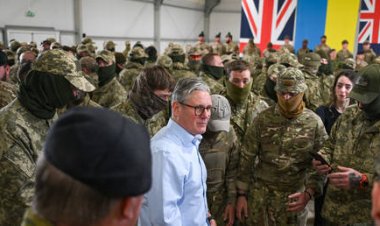Pence appears before Jan. 6 grand jury
Pence’s closed-door appearance marks an extraordinary flashpoint in special counsel Jack Smith’s probe.


Former Vice President Mike Pence testified Thursday before a federal grand jury investigating former President Donald Trump’s effort to subvert the 2020 election, according to two people familiar with the matter.
Pence’s closed-door appearance marks an extraordinary flashpoint in special counsel Jack Smith’s probe. Smith’s team is investigating Trump’s last-ditch bid to pressure Pence into single-handedly derailing the transfer of power from Trump to Joe Biden on Jan. 6, 2021.
Pence’s appearance was accompanied by a frenzy of security activity at the federal courthouse in Washington, D.C., where U.S. Marshals and other security personnel conducted sweeps of the building before Pence was whisked inside without being spotted by cameras at the courthouse’s main entrances.
Pence was at the courthouse for more than five hours. His appearance before the grand jury was confirmed by two people who were not authorized to discuss it publicly.
His testimony began just hours after a federal appeals court rejected Trump’s emergency bid to block Pence from testifying or limit the scope of prosecutors’ potential questions.
A three-judge panel of the D.C. Circuit Court of Appeals issued an order late Wednesday denying the former president’s last-ditch effort. Though the order remains sealed to protect grand jury secrecy, POLITICO had previously confirmed Trump’s appeal, which followed a district court judge’s order that required Pence to testify.
Prosecutors are interested in Trump’s increasingly desperate effort to seize a second term he didn’t win, which intensified after he lost dozens of court battles aimed at overturning the results. Trump, aided by attorneys and allies pushing fringe legal theories, pressed Pence to use his perch on Jan. 6, when he was required to preside over a joint session of Congress to count the electoral votes certifying Biden’s victory.
As Jan. 6 approached, Trump pushed Pence to assert the power to reject or delay counting Biden’s electoral votes. But Pence resisted his pressure, ultimately determining he had no power to decide which electoral votes to count or reject. Trump lashed out at Pence after his decision became clear on the morning of Jan. 6, inflaming a crowd that Trump had sent to the Capitol to protest the election results. Later, that crowd would form a mob that overran the building, sending Pence and lawmakers fleeing for safety
Aides to the former vice president did not comment on the appeals court’s decision or Pence’s appearance but have previously indicated Pence would follow the orders of the court.
Smith subpoenaed Pence in February, prompting separate challenges by both Trump and Pence.
While Trump argued that Pence’s testimony should be barred or limited by executive privilege, Pence took a different tack. He contended that his role presiding over Congress on Jan. 6 — fulfilling his constitutional role as president of the Senate — entitled him to immunity under the so-called “speech or debate” clause, which protects Congress from executive branch intrusion.
Chief U.S. District Court Judge James Boasberg rejected Trump’s argument but agreed with Pence that the congressional immunity applied on certain topics — a historic decision that for the first time found vice presidents enjoy a form of privilege. Although Boasberg’s ruling was narrower than Pence’s attorney, Emmet Flood, had argued for, Pence opted not to appeal the decision.
Trump earlier this month sought an emergency order from the court of appeals blocking Boasberg’s ruling. But Wednesday’s order — a unanimous ruling by Judges Patricia Millett, Robert Wilkins and Gregory Katsas — rejected that effort. Millett and Wilkins are Obama appointees, while Katsas is a Trump appointee.
Betsy Woodruff Swan contributed to this report.












